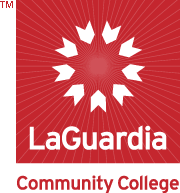Document Type
Assignment
Publication Date
8-2019
Abstract
A. Scavenger Hunt Description
❏ This Scavenger Hunt Assignment is designed for the First Year Seminar for Natural Sciences (NSF 101) and the First Year Seminar for Liberal Arts: Math and Science (LMF 101) (STEM majors).
❏ The main objective of this assignment is to familiarize students with their campus and its resources, to encourage students to collaborate with each other, and to be aware that the scientific method is applied to solve any problem, not just scientific issues. It is meant to address the Integrative Learning Core Competency.
❏ Students are given the entire class time (at least two hours) to complete the assignment. For LMF sections, I often add more clues, because the class runs for an additional hour. I have the students report back to class, so we can discuss and share their experiences and explain the follow-up Lab Report Reflection. For LMF sections the discussion is after the 2 hours allotted for the clues. The NSF section discusses the Scavenger Hunt and follow-up Lab Report Reflection the next class following the Scavenger Hunt group activity. The Lab Report Reflection is due the week following the discussion, but students may hand it in before the due date. The Reflection is written as a STEM lab report/abstract format, using the Claim, Evidence, Reasoning, & Rebuttal (CERR) method, which is used within the Natural Sciences Dept. for all STEM classes. The CER method is the Scientific Method, which uses more ordinary language. So instead of making a hypothesis, students make a testable claim. I write CERR method, which includes the second “R”, to remind students to include possible contradictions, challenges, and/or rebuttals to experiments they do, and the research they find reading scientific journals.
❏ This assignment is worth 5% of students’ total grade, 2.5 % for the actual hunt and 2.5% for the reflection. I do not take off points for students that complete the hunt alone because they were absent. The penalty is having to do the assignment on their own time.
B. Scavenger Hunt Assignment Reflection
❏ This assignment introduces students to their campus and informs them of the many resources offered to them. Part of the hunt asks students to find places to sit or look at the artwork displayed around campus. The students’ pictures show me that they enjoyed this exercise, despite dreading it at first. They often find that they do not know everything offered to them, like free swim lessons and daycare services.
It is important to follow-up with students to discuss the reflective lab report assignment. Many students miss the point that the hypothesis is “Can we find all the clues within 2 hours to learn about the resources my college has to offer me?”. Students often just think it is just a team building exercise, or just a resource search. The reflective lab report forces students to think more in strategic/scientific terms. They needed tools (like the internet with MyLaguardia) and to plan how they were going to look for various clues within the 3 campus buildings within a certain time frame. They discover that they used the scientific method, without meaning to do so. This exercise is usually given by the 3rd lecture to encourage students to work in groups early in the semester. They learn about the challenges working with unfamiliar classmates. Despite their preliminary frustrations, most students enjoy the experience by the end of the hunt, which is apparent from the smiles in the pictures they upload to their e-Portfolios. The Scavenger Hunt is my favorite assignment because of its team building aspect. After this assignment, the climate in my classroom is warmer; students are more willing to do group activities during lecture.
❏ Acknowledgement: The idea to make this reflective assignment an explicit lab report, instead of implicit, was Karen Miller’s at an Integrative Learning Charrette Workshop.
Creative Commons License

This work is licensed under a Creative Commons Attribution-Noncommercial 4.0 License



Comments
This resource is part of the First Year Seminar Curricular Resources.